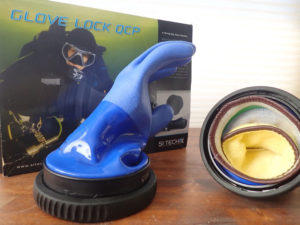There comes a time in our childhood where we are blue and shivering, directly refusing to come out of the pool. Despite the relentless plea of a parent to do so, we venture on in misery “because it’s fun”. This doesn’t change as an adult who loves diving.
I made the choice to become a dry suit diver when October came and I wasn’t ready to stop diving. Blue and shivering is tolerable in 60 degree water, but the 50’s changed everything for me. The risk of decompression sickness coupled with misery eventually outweighs stubbornness.
Enter, the dry suit…
“What if My Suit Leaks?”
Before taking a dry suit class, I was consumed with the fear of the suit leaking and leaving me at the bottom of the ocean, ready to die. It was an unwarranted fear, but a legitimate fear nonetheless. I learned that water in the suit is uncomfortable at the end of the dive, but nothing that will leave you “at the bottom of the ocean, ready to die”.

My suit leaks. My neck seal isn’t tight enough. I had it replaced with a brand new neck seal, hoping to resolve the issue. It also leaks. This isn’t a suit or seal problem, it’s a problem of genetics and physical make up. I found resolution with a silicone neck expander ring. The leaking is far more minimized and/or eliminated depending on the depth I dive. We’ll call this one a win.
Weight Loss or Weight Gain?
It took around 25 dives for me to figure out my ideal weight for dry suit diving. I have a log book, just for my dry suit weighting chart. “That sounds excessive” I’ve heard, but when you consider all the configurations of what to wear underwater as temperatures change, then throw in salt vs. fresh water, it truly isn’t. The end result came when I changed several pieces of equipment from booties to BCD.
I began with a wicking liner, 14 lbs and ankle weights in 62 degree water. I ended with 24 lbs, different boots, no ankle weights, a different BC, different fins, a hefty undergarment and have been diving comfortably year-round in 33-70 degree water. And it took about a year to figure out was ideal for me as the temperatures changed.
Dry Suit or BCD for Buoyancy?
This is a question that is about as fun to ask as which political party or religion someone supports. Everyone has an opinion about buoyancy control, and everyone feels strongly about their choice. I spent time trying figure out what they meant, and which air location I preferred. My final conclusion is that this shouldn’t be a “this OR that” question. Ultimately, it depends on what makes sense for your gear configuration at 25 feet of depth in 33 degree freshwater vs. 80 feet of depth in 50 degree saltwater.
Lastly, the seal fit makes a big difference on that decision at any depth. I learned my seal has a tolerance around 72 feet with the Bio Seal and a suit full of air – just enough to keep the squeeze off. And at 73 feet, it just doesn’t tolerate the air, pops the neck seal and floods my suit despite an open arm vent. The best solution for me at deeper depths is to use the suit to keep the squeeze to a minimum and then use my BC to assist the leveling past 80 feet.
Gloves
I have learned that there is a fine line between dexterity and comfort:
- 60 degree water with 3mm gloves offers a great solution.
- 50 degree water with 5mm is suitable.
- 33 degree water with 5mm is acceptable for exactly 6 minutes.
- 33 degree water with 5mm becomes unsafe after 22 minutes, as all dexterity is lost. Lesson learned.

I made the choice to switch to dry gloves over the 7mm lobster gloves due to an ordering fiasco, rather than an intelligent, logic-based solution.
Lock ring seal technology looks serious, impressive and a little bit on the bad-ass side. Within 20 minutes of trying out ring sizes and getting the glove in the proper position, my new lock ring system was added to my suit. Within 12 hours of receiving the gloves, they were in the water on a trial run. I’m sold. Properly fitting dry gloves with liners not only offer reasonable dexterity, they’re dry. Seriously, dry.
Summary
Dry suit diving is more of a relationship than a one-night stand. It takes commitment, patience, time, understanding, and a side of humility. But in the end, it opens up a wonderful new world and diving without the crowds and is absolutely worth it.

